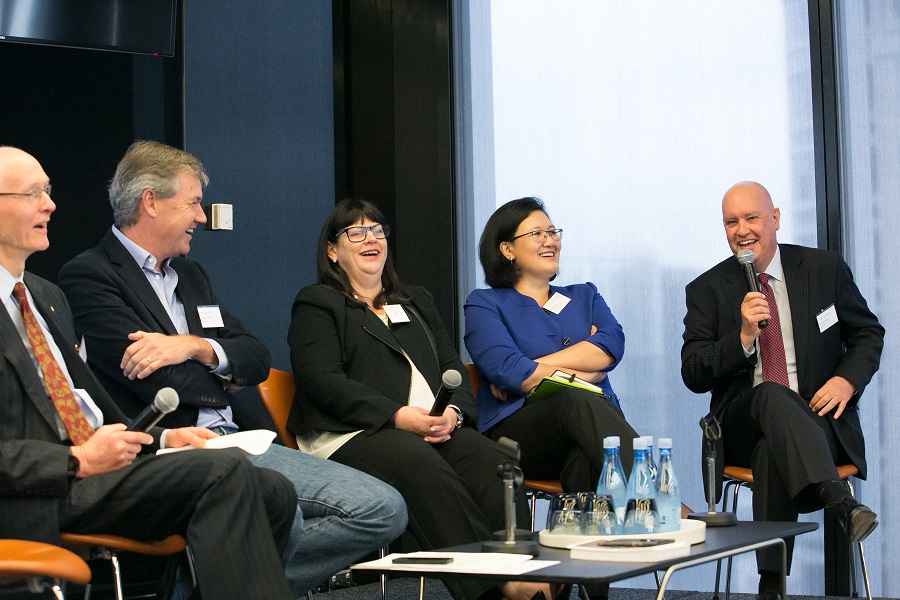
Business & Human Rights, News
Workplaces can help prevent violence against women
UN Global Compact Network Australia | March 8, 2016
Promoting gender equity and respect in the workplace can be an important factor in preventing violence against women. Research has shown that discrimination and sexual harassment continue to affect women at work. In one study, over 60 per cent of women in the State of Victoria (Australia) reported some form of violence victimization at work and a further 75 per cent reporting unwanted or unwelcome sexual behaviour at work. Domestic violence also affects workplaces, with the Australian Government estimating the economic costs to the business and corporate sector totalling to about $1.5 billion a year. The direct costs in terms of staff absenteeism, lost productivity, replacement staff costs and misused workplace resources are estimated at $465 million.
In fact, governments, legislation and legal processes are increasingly recognising the role of workplaces in responding to domestic violence. For example, the recent case of Moghimi v Eliana Construction and Developing Group Pty Ltd heard by the Australian Fair Work Commission in 2015, led to a landmark decision that employers have an added duty of care for victims of domestic violence as they rely on workplaces for financial and economic security and physical security from abuse. This means that in addition to legal obligations to provide a safe and equitable workplace, an organisation’s duty of care to employees extends to workplace responses to domestic and family violence. This obligation might be met in part by providing domestic violence leave to employees, and support through employee assistance programs.
Workplaces have a lot to offer in efforts to prevent violence against women, whether occurring in public or private life. Our recent research examined how workplaces are contributing, directly and indirectly, to addressing the underlying causes of violence – namely, by promoting gender equity and building cultures of respect. Our report focused on 15 workplaces and organisations from the corporate, community sports and recreation, local councils and education settings as well as male-dominated industries and looked specifically at how they are addressing gender equity and the prevention of violence against women in the workplace.
In short, we found that organisations need to go beyond simple statements endorsing gender equality or trumpeting calls to end violence against women. Rather, preventing violence against women in workplaces requires direct action and the development of holistic approaches to addressing gender-based inequalities at work.
Research shows that workplace responses to violence against women have been poor, and the vast majority of employers are not well equipped to recognise, and responding to, the signs that an employee may be experiencing violence. An essential component of workplace prevention programming is training individual staff and managers to recognise the signs that someone may be experiencing violence, responding appropriately and referring employees to appropriate support services. Practical policy changes, including domestic violence leave clauses are a first step in this direction and organisations like CEO Challenge and the White Ribbon Workplace Accreditation Program are working with employers to raise awareness and assist with implementing policies and staff training programs.
Resistance from senior management was one of the biggest issues raised by research participants; so clearly, commitment from senior management is a crucial factor in program success. Organisational ‘champions’ can be central in efforts to lead and sustain change, and the Male Champions of Change campaign offers a great way for male leaders to become involved in prevention work. The Centre for Ethical Leadership has developed an innovative project working intensively with executive level staff to identify and transform gender bias and structural barriers within an organisation preventing women from attaining leadership positions.
While the support of senior management may be a crucial factor, prevention activities need to be implemented consistently and sustained across the organisation. One way organisations have achieved this is through the appointment of dedicated PVAW officers. Local city councils, like Darebin City Council and Maribyrnong City Council in Melbourne have appointed dedicated PVAW officers to embed prevention activities throughout the organisation’s work and oversee prevention activities.
Our report also documents promising practice in prevention programming as adopting a ‘whole-of-organisation’ approach. This includes the development of multiple strategies to drive change at different levels (executive management, middle management and entry level staff) and for different outcomes (formal policy and practices, staff knowledge and attitudes and informal cultures and behaviours). Act@Work, a program developed by Women’s Health Grampians provides a powerful example of this kind of initiative. An added advantage of this approach is that it encourages ‘local ownership’, with staff actively involved in identifying areas for change and designing intervention activities, plans and workplace policies and procedures.
Gender audits, for example of pay and equity measures, as well as staff surveys offer an effective way to measure program success, monitor changes in workplace cultures and plan future activities.
Challenging and transforming violence-supportive attitudes and sexist cultures and practices can also support strategic planning around the promotion of equity and respect across race, sexuality and ability. To create safe workplaces free from violence and fulfil their duty of care for employees, employers should look at ways to promote gender equity and respect.
If organisations really want to make a difference they need to develop initiatives designed to respond to violence and provide sustained programming that addresses gender equity. As our research shows, these programs need to be tailored to specific workplace conditions. In violence prevention programming, a one-size-fits-all approach is not suitable nor is it ideal.
There is no doubt that employers see job creation as important. But, what is the point to job creation, if we aren’t providing workplaces that are free from violence? You can’t have good jobs if you don’t work on preventing violence in the workplace.
Authors
Larissa Sandy, Lecturer in Justice and Legal Studies, RMIT University
Larissa is an anthropologist specialising in gender, sexuality and culture. She has more than 10 years experience researching gender-based violence and sexual violence in Australia and the Asia-Pacific region.
Anastasia Powell, Senior Research Fellow in Justice & Legal Studies, RMIT University
Anastasia specialises in policy responses, legal reform and primary prevention of sexual and family violence against women. She has published widely in these fields including four books, and research reports for the Victorian State and Australian Commonwealth Governments.

